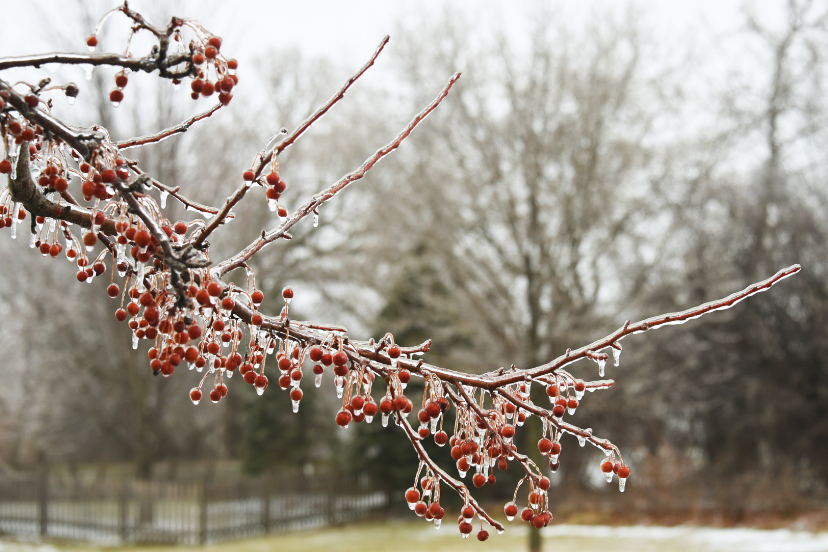With winter well under way, the U.S. is dealing with an even more intense onslaught of weather events. These winter storms that stretch thousands of miles and pack different threats to various regions, from torrential rain and snow to life-threatening flooding. They’re storms seen relatively frequently, but they’ve taking on a higher intensity in recent years, raising worries about future trends and readiness.
Rain’s Role in Winter Storms
Rain is a key feature of many winter storms, particularly across the south. When a winter storm hits, it frequently comes with a mix of rain, sleet and snow, depending on how warm or cold the air and the ground happen to be. While colder areas will see snow and ice, the South is most vulnerable to torrential rainfall.
Rain fall — in the course of a winter storm — can flood, particularly if the ground is already saturated or if the storm drops a crushing amount of precipitation in a short time. The danger of flooding can be severe when water pools in low lying areas or overflows the banks of a river. Waterlogging is worse in urban areas with ineffective drainage, making travel on foot or by vehicle dangerous.
Why Winter Storms Bring the Rain
That’s good news because heavy rainfall usually comes with winter storms, and several atmospheric conditions help make that happen. The moisture factor is the first and is often swept from the ocean and blown inland by prevailing winds. When these winds encounter colder conditions over the land, the moisture can fall as rain rather than snow. The intensity of the low-pressure systems that create these storms also influences how much rain falls.
And where high-pressure systems are positioned can also push warm, moist air from the Gulf Coast to surge north, raising the chance of rain in southern states. That is why parts of the southern U.S. can get torrential rain, while the northern parts of the country receive a blanket of snow.
The Dangers of Flooding Rain
Although rain seems harmless in winter storms, a deluge can have devastating consequences, causing widespread damage and disruption. Flooding is among the more dangerous results of heavy rain. Flash floods can form abruptly, inundating streets, buildings and other infrastructure, sometimes with little warning.
In the South, communities in floodplains or near rivers are especially vulnerable to rain from winter storms. Unrelenting rain causes rivers to overflow, flooding surroundings and leading to property damage, displacement, and, in some cases, death.
Inadequate drainage in urban areas causes debilitating flooding, hindering emergency services and forcing drivers to abandon vehicles. In flood-prone areas, rising waters during storms are a primary concern, making flood preparedness critically important.
How to Prepare for Rain and Flooding
With the threats posed by flood-inducing rain, it’s important to be prepared when winter storms are coming. In flood-prone areas, an emergency kit with food, water, flashlight, and first aid supplies aids during evacuation. It’s crucial to know evacuation routes and shelter locations in case flooding makes your home unsafe to stay.
{ad14} People should also stay updated by checking weather alerts and warnings regularly. Modern technology like cellphone apps and weather stations have made it easier than ever to keep track of incoming storms. Preparing vehicles for storms, including filling gas and stocking emergency kits, helps avoid dangers during hazardous weather travel.
Severe rain: Stay at home and do not travel. Flooded roads are tricky to navigate, as water can conceal potholes, debris, and other hazards beneath the surface. Remember, if you’re driving and come upon some flooding: It’s better to turn this around than to die.
A Dangerous Mix: Snow Followed by Rain
As winter storms track northward, a mix of rain and snow can make matters even messier. Southern U.S. faces heavy rain and flooding, while the north experiences snow, icy roads, and airport delays.
This combined effect of rain and snow is one of the most challenging aspects of winter storms. Rainwater quickly saturates the ground, making it harder for snow to stick or build up. But when temperatures fall, that moisture can freeze, and icing conditions worsen over time. The dance of snow and rain means that even places that are generally snow-laden aren’t immune from the threats that too much rain brings from these wintry systems.
Climate Change and Severe Winter Storms
Over the past few years, a growing argument has emerged that climate change is contributing to the unusually strong intensity of winter storms. Studies suggest that climate change may be increasing the severity of winter storms, including higher rainfall.
Warmer ocean temperatures can give storms more moisture, which can mean more rain. Warmer temperatures increase rain instead of snow, leading to dangerous flash floods in typically snowy regions. As climate trends shift, extreme weather events grow more frequent, posing new challenges for communities across the U.S.
Conclusion
The waves are piling up, and there’s no other way—this weather can’t ruin your plans. Heavy rain — especially when mixed with snow and ice — can lead to flash floods, road closures and power outages, all of which create hazardous conditions. People in harm’s way must exercise vigilance and preparedness, ensuring their homes and families are ready for worst-case scenarios.
But beyond preparing ourselves as individuals, investing in better infrastructure — such as drainage systems and flood protection walls — can go a long way toward reducing the toll of flooding rain. “Taking a proactive position and being aware of the dangers that rain during winter storms presents can help minimize damage and maintain safety during these increasingly unpredictable weather events.”
